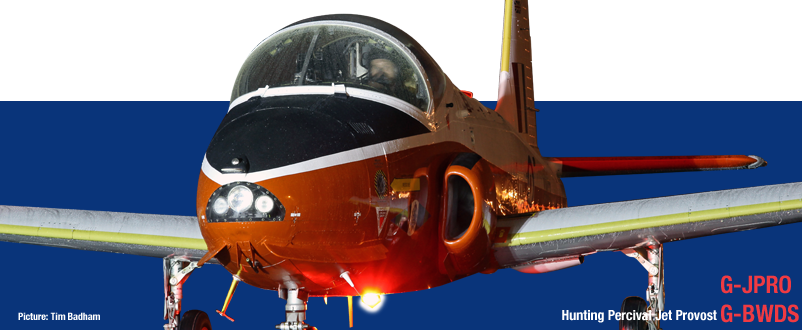
G-AMSV Returns to Coventry
An old friend returned to Coventry yesterday when G-AMSV, in her striking Indian Air force livery, landed here for extensive maintenance by our engineers. Sierra Victor was part of the Air Altantique fleet here for many years. She'll...
Baginton Air Pageant
The initial details for the Baginton Air Pageant are up on the website! As we don't have the space for a full-on air show attracting 20,000 or so people, we're aiming for low-key, themed days like this. A couple of thousand people,...
Newquay Pleasure flights
We promised we'd be back to fly in Cornwall, and here we are. We'll be heading south with a Rapide and Chipmunk to spend a week at Newquay from 25th July, with a further visit planned in August. The flights are bookable in the normal...
New Dakota Book
Geoff Jones just told me that his new book on the DC-3, released to celebrate the 80th anniversary of the Dak's appearance, is now available. The cover sports a lovely shot of G-ANAF, shot by Simon Westwood before her radome goiter was...
Nimrod Engine Run
We've just confirmed plans by NPT to run all four of the Nimrod's Rolls-Royce Speys on Saturday 9th May. We expect the thunder to start just after lunchtime. Come along and enjoy some audio power - and please dip into your pockets...


In the early 1950s the Royal Air Force decided to streamline its training programmes by using just jet powered aircraft (thus doing away with the piston powered aircraft used for ab initio training. However in order to do this it needed a new jet powered basic trainer.
Hunting Percival’s answer to this was to take one of its successful Alvis Leonides powered Provost aircraft and re-engineer it to accommodate a Bristol-Siddeley Viper 102 jet engine. The new aircraft, inevitably dubbed the ‘Jet Provost T.1’, first flew on June 26, 1954 and it would go on to become one of the most successful jet aircraft ever produced in Great Britain.
The side-by-side seating and good handling qualities made it a hit with the RAF who ordered 201 in June 1959. The RAF requested some modifications to the airframe however and the new aircraft, referred to as the Jet Provost T.3, had a shorter undercarriage, different avionics, a larger canopy, ejection seats and wingtip fuel tanks.
In November 1961 the RAF issued a follow-on order for a further 198 Jet Provosts T.4s - fitted with a higher powered Rolls Royce Viper 202 engine and these were built and delivered by the British Aircraft Corporation.
By 1967 the RAF needed even more JPs (as the type had now been dubbed) so 105 of the Jet Provost T.5 variant were ordered. The T.5 had a pressurised cockpit, re-designed windscreen and canopy, a longer nose and new wings. This variant was later developed into the Strikemaster attack aircraft and won considerable sales on the export market. The JP and Strikemaster would go on to be exported to Oman Sri Lanka, Kuwait, Iraq and Venezuela among other countries.
The JP was finally retired from RAF service in 1993 after a career spanning more than 35 years. It was replaced by the Tucano but a large number still fly on in private hands.

